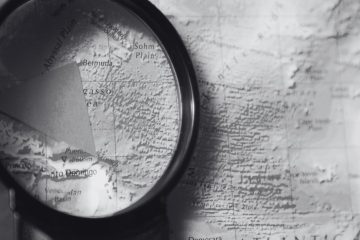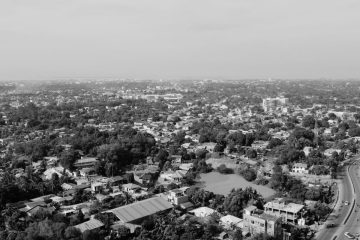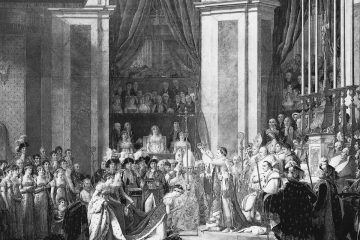What Happened On August 13th?
In the early hours of August 13, 1961, East German soldiers and construction workers transformed Berlin overnight. They moved quickly under the cover of darkness, closing the border between East and West Berlin. By dawn, barbed wire fences and makeshift barriers divided streets, neighborhoods, and families. The Berlin Wall’s construction had begun, and it would soon become the Cold War’s most visible emblem.
The operation unfolded with precision. Trucks carrying materials arrived, and workers immediately started building the first barriers. Armed East German police and soldiers stood guard as the work progressed. By morning, they had closed 69 of the 81 crossing points between East and West Berlin, leaving thousands of Berliners stunned and disoriented.
Residents who had gone to bed in a divided city woke up to find it physically split. Families found themselves suddenly separated, with members stranded on opposite sides of the new barriers. Some tried to cross immediately, but East German forces, under strict orders, blocked their way. A few desperate individuals attempted to climb over or cut through the wire, but soldiers quickly stopped them.
As the day continued, workers reinforced the barriers. They replaced the barbed wire with concrete blocks, making the division more permanent. By nightfall, East Germany had successfully isolated West Berlin, turning it into an enclave within the communist state. This swift and dramatic action set the stage for nearly three decades of separation.
In the following days, East German authorities intensified the Wall’s construction. They replaced the initial barriers of August 13th with taller, sturdier concrete walls. Guard towers went up, and soldiers patrolled with orders to shoot anyone attempting to escape. What started as a temporary measure quickly became a heavily fortified border, solidifying the Cold War’s divide.
One lesser-known fact is that civilian workers, many of whom were unaware of the full extent of the project, also participated in building the Wall. Some of these workers were coerced into service, playing a crucial role in the rapid erection of the barriers. Their involvement reflected the regime’s urgency and the secrecy surrounding the operation.
Another intriguing detail involves the early methods people used to escape before the Wall became impenetrable. In the initial days of construction, some East Berliners managed to escape by leaping from windows of buildings that straddled the border. These buildings, which had entrances in East Berlin and exits in West Berlin, provided a brief and dangerous opportunity for escape. Once East German authorities realized this, they quickly bricked up the windows and sealed off access to these structures, closing off one of the last avenues of escape.
East German leader Walter Ulbricht had publicly denied any plans to build a wall just two months earlier. However, the events of August 13th revealed the regime’s true intentions. The East German government claimed the Wall was an “anti-fascist protection barrier” to keep Western “fascists” out. In reality, the Wall aimed to stop the mass exodus of East Germans to the West, which had reached crisis levels.
The speed with which the Wall rose also stemmed from a lesser-known geopolitical factor. The Soviet Union, under Nikita Khrushchev, pressured East Germany to take stronger measures to stop the flow of refugees to the West. Khrushchev viewed the Wall as a way to stabilize East Germany and reduce the embarrassment of its population fleeing in large numbers. This pressure from Moscow accelerated the Wall’s construction, highlighting the broader Cold War context in which the Wall emerged.
The construction of the Berlin Wall didn’t just shock Berliners—it also surprised the world. The Western Allies, including the United States, Britain, and France, had known about the escalating tensions in Berlin but had not expected such a drastic and immediate action. Western powers quickly condemned the construction of the Wall, but their response was constrained by the risk of provoking a broader conflict with the Soviet Union. President John F. Kennedy, aware of the potential for escalation, chose a measured response, reinforcing U.S. support for West Berlin without direct confrontation.
The events of August 13th created a tense and heavily guarded border. Over the following weeks and months, East Germany expanded and fortified the Wall, eventually stretching it nearly 100 miles around West Berlin. The Wall included a “death strip” designed to deter escape attempts. This strip was a barren area covered with sand to reveal footprints, lined with floodlights, and littered with anti-vehicle trenches, making escape nearly impossible.
Another lesser-known aspect of the Wall’s history is the extensive use of informants by the Stasi, East Germany’s secret police. The Stasi placed informants in nearly every neighborhood, and after the Wall’s construction, their surveillance efforts intensified. These informants played a crucial role in maintaining control over the population, reporting on anyone suspected of dissent or planning to escape. The Stasi’s reach was so extensive that it is estimated nearly one in six East Germans had some form of connection to the secret police, whether as informants or as subjects of surveillance.
In the first days after the Wall’s construction, several people managed to escape before East German authorities fully secured the border. For example, one group of young East Berliners dug a tunnel under the rudimentary barriers and fled to the West. These early escapes highlighted the initial vulnerabilities of the Wall, which East German authorities quickly moved to eliminate.
Despite the Wall’s deadly purpose, more than 5,000 people successfully fled to the West during its existence. Some escapes were particularly daring, including that of Conrad Schumann, an East German border guard who famously jumped over a barbed-wire fence into West Berlin on August 15, 1961, just two days after construction began. His leap to freedom was captured in a photograph that became one of the most iconic images of the Cold War.
East Germany constructed the Berlin Wall on August 13, 1961, and it stood for 28 years as a symbol of East-West division. The Wall split a city and represented the broader ideological conflict of the Cold War. The Wall’s construction began a dark chapter in Berlin’s history, one that ended when the Wall fell in 1989, signaling the Cold War’s demise.
Interestingly, although intended as a tool of oppression, the Berlin Wall ironically became a powerful symbol of resistance. On the western side, artists began to cover the Wall in graffiti and murals, turning it into a canvas for protest and expression. These artworks conveyed messages of hope, freedom, and defiance, turning the Wall into a testament not only to division but also to the human spirit’s resilience.
Additionally, as the Wall stood, it became a focal point for diplomatic tensions and a barometer for the Cold War’s state of affairs. For instance, in October 1961, just two months after the Wall’s construction began, a standoff occurred at Checkpoint Charlie between U.S. and Soviet tanks, each side unwilling to back down. The standoff, which lasted 16 hours, brought the world to the brink of a potential conflict, illustrating how the Wall was not just a physical barrier but a flashpoint for global tensions.





